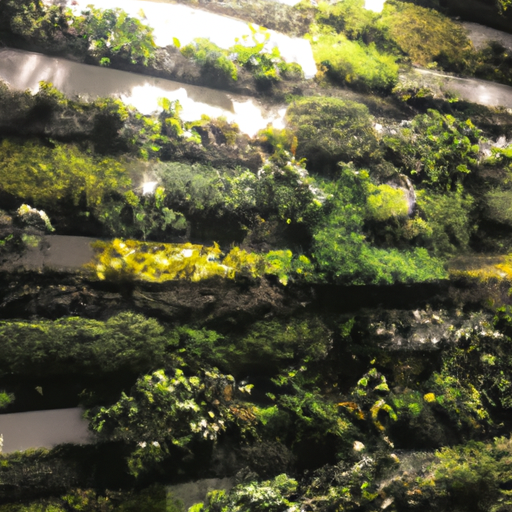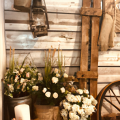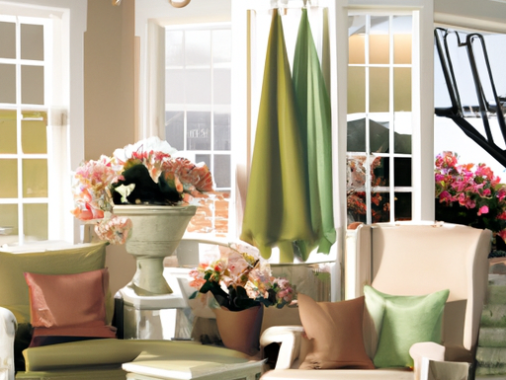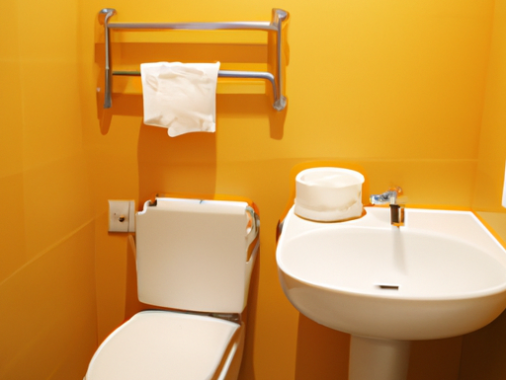-
Table of Contents
- Introduction
- How to Create a Vertical Plant Wall Indoor for Maximum Impact
- The Benefits of Installing a Vertical Plant Wall Indoor
- Tips for Choosing the Right Plants for Your Vertical Plant Wall Indoor
- The Best Ways to Care for Your Vertical Plant Wall Indoor
- How to Design a Vertical Plant Wall Indoor to Fit Your Space
- The Pros and Cons of Installing a Vertical Plant Wall Indoor
- Creative Ideas for Decorating with a Vertical Plant Wall Indoor
- Q&A
- Conclusion
Introduction
A vertical plant wall is a great way to bring a touch of nature into your home or office. It is an attractive and creative way to add a unique and vibrant look to any indoor space. Vertical plant walls are becoming increasingly popular due to their ability to bring life and color to any room. They are also a great way to purify the air and reduce stress. With a variety of plants to choose from, you can create a stunning and unique vertical plant wall that will be the envy of all your friends.
How to Create a Vertical Plant Wall Indoor for Maximum Impact
Creating a vertical plant wall indoor can be a great way to add a unique and eye-catching feature to any room. Not only do these walls look beautiful, but they can also help to purify the air and create a calming atmosphere. Here are some tips for creating a vertical plant wall that will have maximum impact.
First, decide on the size and shape of the wall. Consider the size of the room and the amount of light available. If the room is small, a smaller wall may be more suitable. If the room is larger, a larger wall may be more impactful.
Next, choose the plants that will be used. Consider the light requirements of the plants and the amount of light available in the room. Some plants that work well for vertical walls include ferns, ivy, and philodendrons.
Once the plants have been chosen, it is time to decide on the structure of the wall. There are several options available, including hanging planters, wall-mounted planters, and freestanding planters. Consider the size of the plants and the amount of space available when making this decision.
Finally, it is time to assemble the wall. If using hanging planters, attach the planters to the wall using screws or hooks. If using wall-mounted planters, attach the planters to the wall using screws or nails. If using freestanding planters, place the planters on the floor and secure them to the wall using screws or nails.
Creating a vertical plant wall indoor can be a great way to add a unique and eye-catching feature to any room. With careful planning and the right plants, it is possible to create a wall that will have maximum impact.
The Benefits of Installing a Vertical Plant Wall Indoor
Installing a vertical plant wall indoors can provide a range of benefits to any home or office. Not only do these walls add a touch of greenery to any space, but they can also help to improve air quality, reduce noise levels, and even act as a natural air filter. Here are some of the key benefits of installing a vertical plant wall indoors.
First, vertical plant walls can help to improve air quality. Plants naturally absorb carbon dioxide and release oxygen, which can help to purify the air in any indoor space. This can be especially beneficial in areas with poor air circulation, such as offices or homes with limited windows.
Second, vertical plant walls can help to reduce noise levels. Plants absorb sound waves, which can help to reduce the amount of noise that is heard in any given space. This can be especially beneficial in areas with high levels of noise, such as offices or homes with multiple occupants.
Third, vertical plant walls can act as a natural air filter. Plants naturally absorb pollutants from the air, such as dust, pollen, and other allergens. This can help to reduce the amount of allergens in the air, which can be beneficial for those with allergies or asthma.
Finally, vertical plant walls can add a touch of greenery to any indoor space. These walls can be used to create a beautiful and calming atmosphere, which can help to reduce stress levels and improve overall wellbeing.
Overall, installing a vertical plant wall indoors can provide a range of benefits to any home or office. Not only do these walls add a touch of greenery to any space, but they can also help to improve air quality, reduce noise levels, and act as a natural air filter.
Tips for Choosing the Right Plants for Your Vertical Plant Wall Indoor
1. Consider the Amount of Light: When selecting plants for your vertical plant wall, it is important to consider the amount of light the wall will receive. Some plants require more light than others, so it is important to choose plants that will thrive in the amount of light available.
2. Choose Plants with Different Textures: To create an interesting and visually appealing vertical plant wall, it is important to choose plants with different textures. This will add depth and dimension to the wall.
3. Consider the Size of the Plants: When selecting plants for your vertical plant wall, it is important to consider the size of the plants. Choose plants that will fit comfortably on the wall without overcrowding it.
4. Choose Plants with Different Colors: To create a vibrant and eye-catching vertical plant wall, it is important to choose plants with different colors. This will add a pop of color to the wall and make it stand out.
5. Consider the Maintenance Requirements: When selecting plants for your vertical plant wall, it is important to consider the maintenance requirements of each plant. Some plants require more maintenance than others, so it is important to choose plants that you can easily care for.
The Best Ways to Care for Your Vertical Plant Wall Indoor
Indoor vertical plant walls are a great way to bring a touch of nature into your home. They can be used to create a beautiful and unique living space, and they are relatively easy to maintain. However, there are some important steps you should take to ensure your vertical plant wall remains healthy and vibrant.
1. Choose the Right Plants: When selecting plants for your vertical plant wall, it is important to choose varieties that are well-suited to the environment. Consider the amount of light available, the temperature, and the humidity levels in the room.
2. Provide Adequate Watering: Vertical plant walls require regular watering to keep them healthy. Water your plants thoroughly, but be careful not to overwater them. If the soil is too wet, the plants may become waterlogged and die.
3. Fertilize Regularly: Fertilizing your vertical plant wall is essential for keeping the plants healthy and vibrant. Choose a fertilizer that is specifically designed for indoor plants and follow the instructions on the package.
4. Prune and Trim: Pruning and trimming your vertical plant wall is important for keeping it looking neat and tidy. Trim off any dead or dying leaves and stems, and prune back any overgrown plants.
5. Monitor for Pests: Pests can be a major problem for indoor vertical plant walls. Monitor your plants regularly for signs of pests, such as aphids, mealybugs, and spider mites. If you notice any pests, treat them immediately with an appropriate insecticide.
By following these simple steps, you can ensure that your vertical plant wall remains healthy and vibrant for years to come.
How to Design a Vertical Plant Wall Indoor to Fit Your Space
Creating a vertical plant wall indoors is a great way to add a touch of nature to your home. Not only do they look beautiful, but they also help to purify the air and create a calming atmosphere. Here are some tips to help you design a vertical plant wall that fits your space.
1. Choose the Right Plants: Before you start designing your vertical plant wall, you need to choose the right plants. Consider the amount of light your space receives, as well as the size and shape of the wall. Some plants that work well for vertical walls include ferns, ivy, and succulents.
2. Measure the Wall: Once you’ve chosen the plants, you need to measure the wall to determine how many plants you can fit. Make sure to leave enough space between each plant so they have room to grow.
3. Choose the Right Containers: You’ll need to choose containers that are the right size for your plants. Make sure they have drainage holes and are made of a material that won’t leach toxins into the soil.
4. Install the Wall: Once you’ve chosen the containers, you can start installing the wall. You can use a variety of materials, such as wood, metal, or plastic. Make sure to use screws or nails to secure the wall to the wall.
5. Add Soil and Plants: Once the wall is installed, you can add soil and plants. Make sure to water the plants regularly and provide them with enough light.
Creating a vertical plant wall indoors is a great way to add a touch of nature to your home. With the right plants, containers, and installation materials, you can create a beautiful and functional vertical plant wall that fits your space.
The Pros and Cons of Installing a Vertical Plant Wall Indoor
Installing a vertical plant wall indoor can be a great way to add a unique and attractive feature to any home or office. However, before making the decision to install one, it is important to consider the pros and cons of doing so.
The Pros
One of the main advantages of installing a vertical plant wall indoor is that it can help to improve air quality. Plants are natural air purifiers, and having a wall of plants in your home or office can help to reduce the levels of pollutants in the air. This can be especially beneficial for those who suffer from allergies or asthma.
In addition, a vertical plant wall can also help to reduce noise levels. The plants can act as a natural sound absorber, helping to reduce the amount of noise that is heard in the space.
Finally, a vertical plant wall can also be a great way to add a unique and attractive feature to any home or office. The plants can be arranged in a variety of ways, allowing you to create a unique and eye-catching feature.
The Cons
One of the main drawbacks of installing a vertical plant wall indoor is that it can be difficult to maintain. The plants will need to be watered regularly, and the wall will need to be cleaned and pruned in order to keep it looking its best. This can be time-consuming and may require the help of a professional.
In addition, the plants may require special lighting in order to thrive. This can be expensive, and may require the installation of additional lighting fixtures.
Finally, a vertical plant wall can also be a potential fire hazard. The plants may be susceptible to catching fire if they are placed too close to a heat source. It is important to ensure that the wall is placed away from any heat sources, and that the plants are regularly pruned to reduce the risk of fire.
In conclusion, installing a vertical plant wall indoor can be a great way to add a unique and attractive feature to any home or office. However, it is important to consider the pros and cons of doing so before making the decision to install one.
Creative Ideas for Decorating with a Vertical Plant Wall Indoor
1. Hang a Vertical Plant Wall: A vertical plant wall is a great way to add a touch of greenery to any indoor space. It can be hung on a wall or even suspended from the ceiling. You can use a variety of plants, such as succulents, ferns, and ivy, to create a lush and vibrant wall.
2. Use a Wall Planter: Wall planters are a great way to add a vertical garden to any indoor space. You can choose from a variety of sizes and shapes to fit your space. You can also choose from a variety of plants, such as herbs, flowers, and succulents.
3. Create a Living Wall: A living wall is a great way to add a touch of nature to any indoor space. You can use a variety of plants, such as ferns, ivy, and succulents, to create a lush and vibrant wall. You can also use a variety of containers, such as hanging baskets, wall planters, and vertical planters.
4. Hang a Vertical Garden: A vertical garden is a great way to add a touch of greenery to any indoor space. You can use a variety of plants, such as herbs, flowers, and succulents, to create a lush and vibrant wall. You can also use a variety of containers, such as hanging baskets, wall planters, and vertical planters.
5. Use a Hanging Basket: Hanging baskets are a great way to add a vertical garden to any indoor space. You can choose from a variety of sizes and shapes to fit your space. You can also choose from a variety of plants, such as herbs, flowers, and succulents.
6. Add a Wall Fountain: Wall fountains are a great way to add a touch of nature to any indoor space. You can choose from a variety of sizes and shapes to fit your space. You can also choose from a variety of plants, such as ferns, ivy, and succulents, to create a lush and vibrant wall.
Q&A
1. What is a vertical plant wall?
A vertical plant wall is a wall-mounted system of planters that can be used to create a living wall of plants indoors.
2. What are the benefits of having a vertical plant wall indoors?
The benefits of having a vertical plant wall indoors include improved air quality, increased humidity, and a more aesthetically pleasing environment. Additionally, vertical plant walls can be used to create a unique and eye-catching feature in any room.
3. What types of plants are suitable for a vertical plant wall?
Suitable plants for a vertical plant wall include trailing plants such as ivy, ferns, and philodendrons, as well as succulents and air plants.
4. How do I care for my vertical plant wall?
Caring for a vertical plant wall involves providing adequate light, water, and nutrients. Additionally, it is important to regularly check for pests and diseases, and to prune the plants as needed.
5. How often should I water my vertical plant wall?
The frequency of watering will depend on the type of plants in the wall, as well as the temperature and humidity of the room. Generally, plants should be watered when the soil is dry to the touch.
6. What type of lighting is best for a vertical plant wall?
The best type of lighting for a vertical plant wall is indirect sunlight or artificial lighting. If using artificial lighting, it is important to ensure that the plants are not exposed to too much light, as this can cause them to become stressed.
7. How do I install a vertical plant wall?
Installing a vertical plant wall involves mounting the planters to the wall, filling them with soil, and planting the desired plants. It is important to ensure that the planters are securely mounted and that the plants are planted at the correct depth.
Conclusion
The vertical plant wall is a great way to bring nature indoors and add a unique touch to any space. It is a great way to add a touch of greenery to any room, and it can be used to create a beautiful and calming atmosphere. With the right care and maintenance, a vertical plant wall can last for years and provide a beautiful and natural addition to any home.




